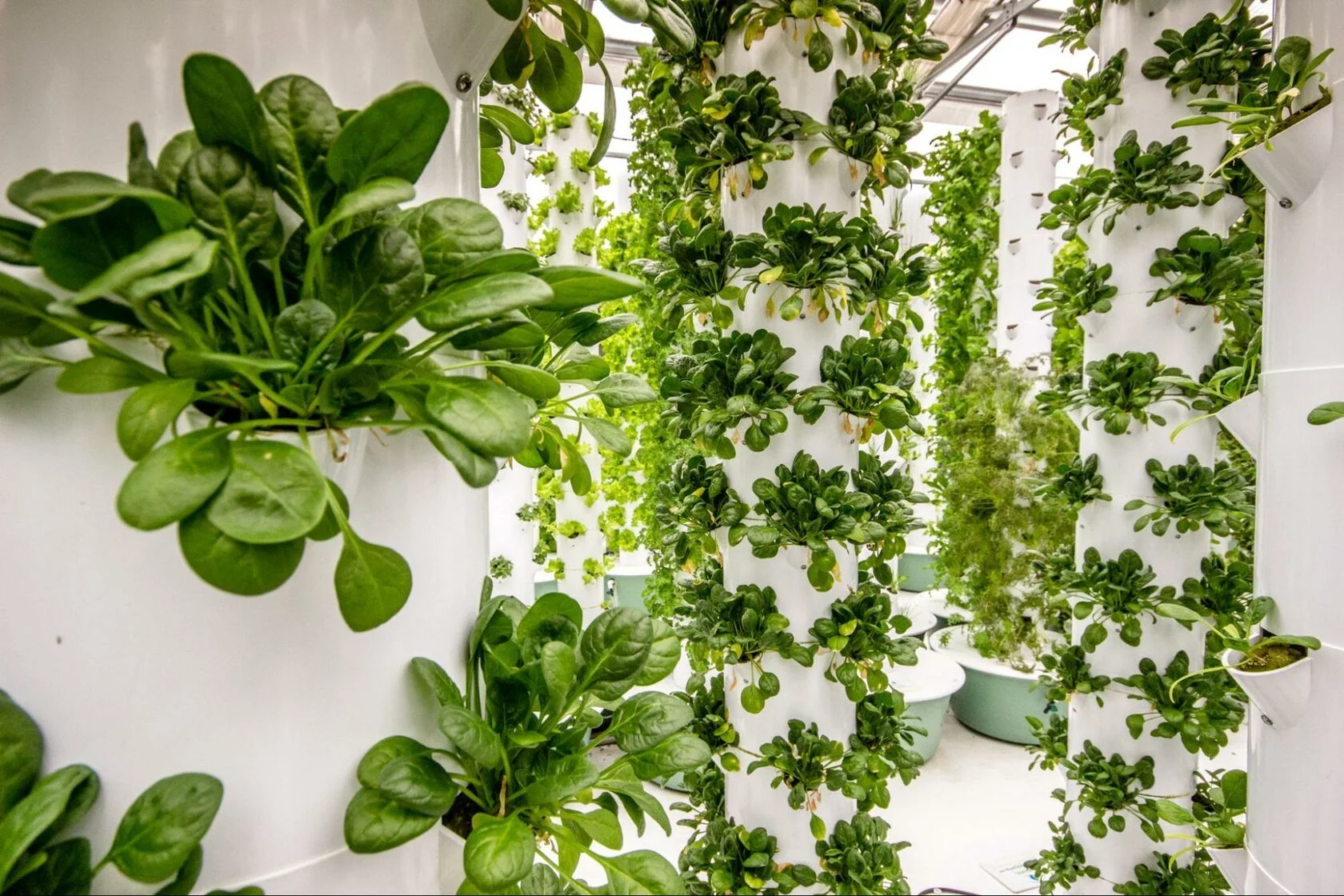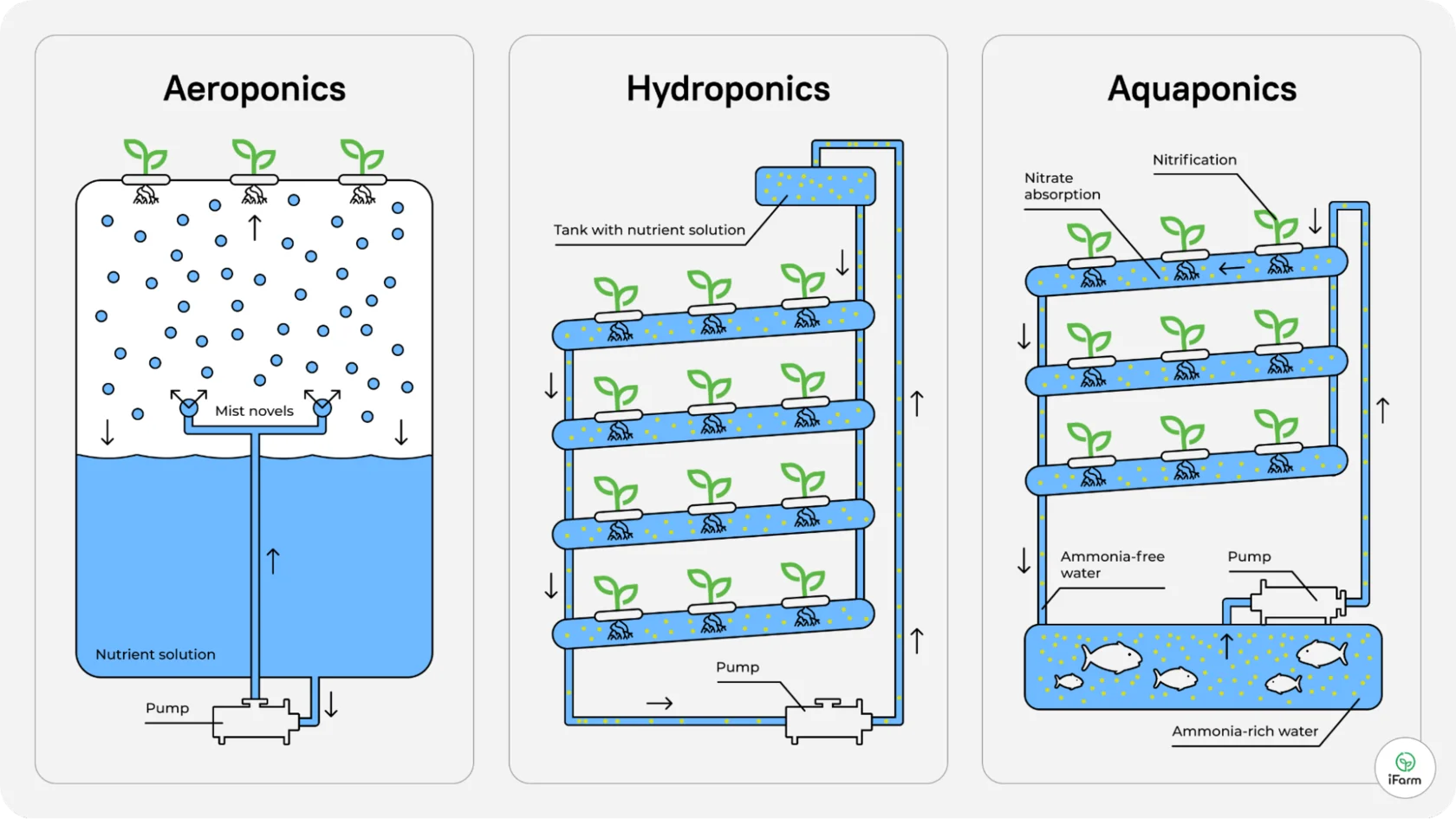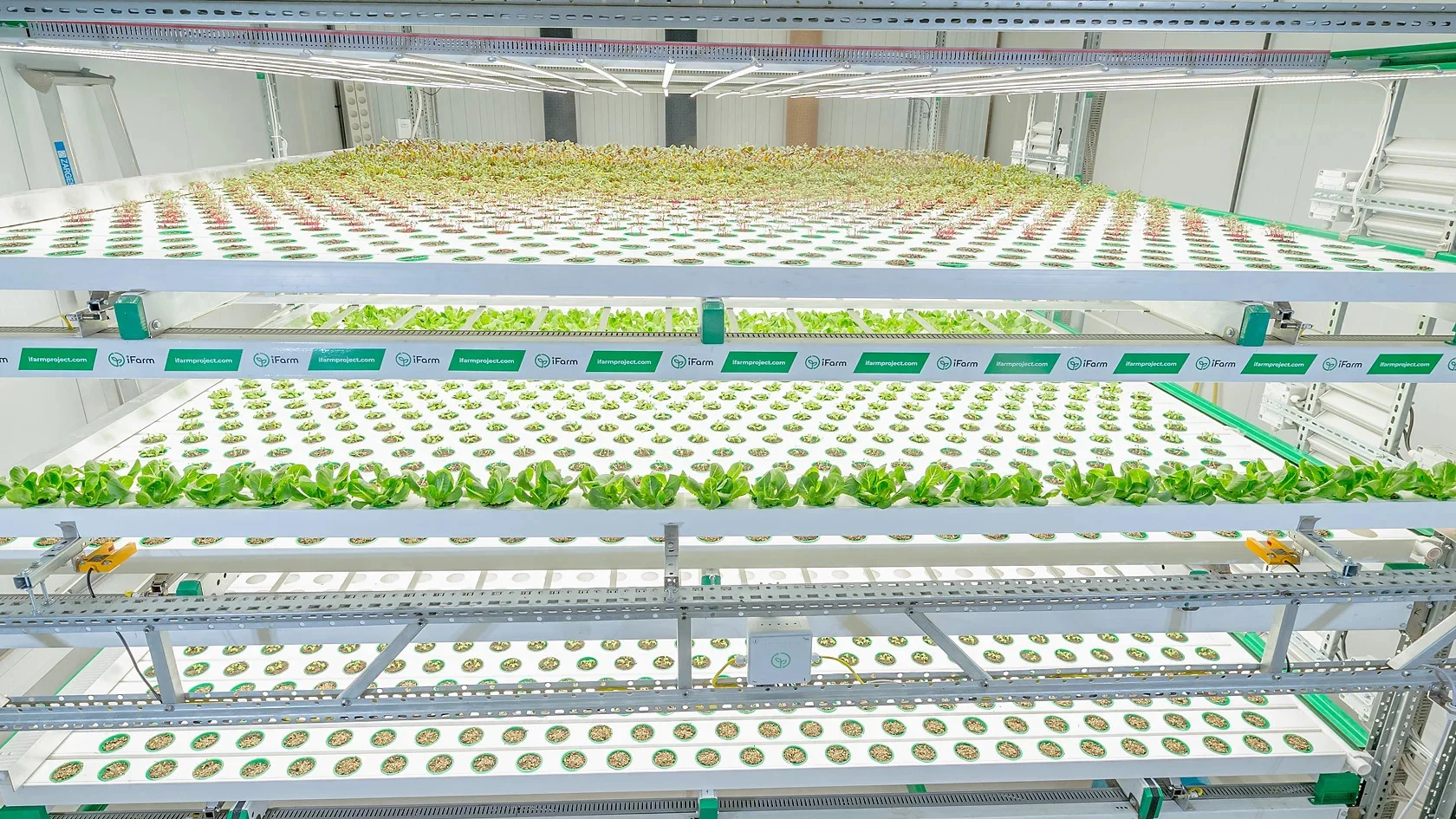Vertical Farming Systems use vertical stacking structures combined with controlled-environment agriculture (CEA) technologies such as hydroponics, aeroponics, and LED lighting to grow crops efficiently indoors. These systems allow for year-round production, reduced water use, and minimal land footprint.
Often implemented in urban environments, they contribute to local food security, reduce transportation emissions, and enable precise control over growing conditions (temperature, light, humidity, nutrients). While energy-intensive, when powered by renewable energy sources, vertical farms can offer a sustainable alternative to conventional agriculture, especially where land is scarce or degraded.
These systems are well-suited for leafy greens, herbs, and other high-value crops, and are increasingly integrated into urban development, climate adaptation, and food resilience strategies.



